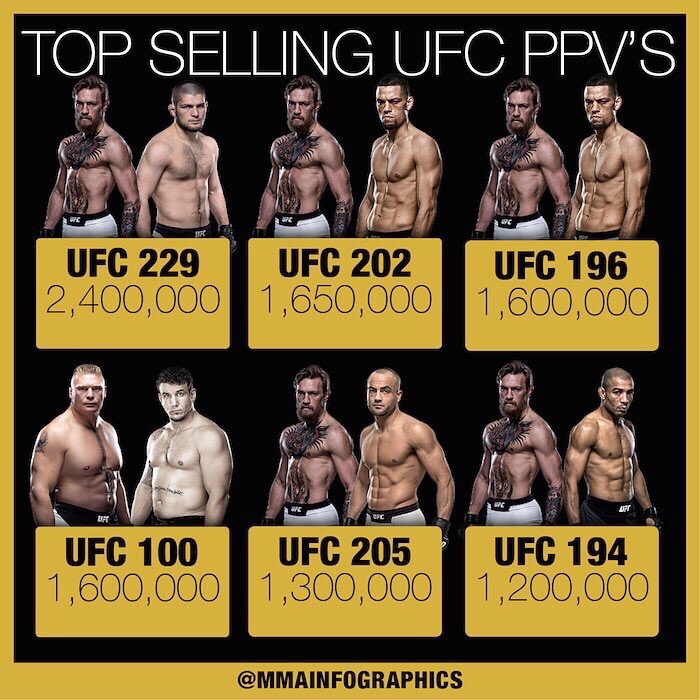Making Money In Mma
Drysdale:’The Average BJJ Black Belt Makes More Money Than The Average MMA Fighter’
To make money in this league, you are obviously expected to be in great shape and spend a lot of time in the gym training, otherwise you would just get walked over in all your fights. The salary of the beginning pro’s is expected to rise by 7% by 2026, with the current median salary at around $26,115, with the lowest 10% only earning $19,000. There are 5 main ways that MMA Fighters make an income: Fights, Endorsements, Owning a School, Seminars, Appearances. One of the main ways that an MMA fighter makes money is through their fights. Smaller promotions will pay between $500 - $800 per event for showing. Fighters may get an additional pay out for a win. To make up for that, Reebok pays the UFC, which in turn pays each fighter an amount based on how many fights they’ve had in the UFC. This Reebok sponsorship pay is minuscule, and it can range from $3,500 per fight to $40,000, according to the MMA Guru.
Ten years ago, serious BJJ practitioners mostly shared a common goal of excelling first in BJJ and then transitioning to MMA. The reasons were mostly for a sporting challenge but more often it was because MMA would offer a bigger chance to make money.
Nowadays, the landscape is very different. MMA and BJJ have went separate ways and most BJJ practitioners barely follow MMA and most MMA fans don’t follow BJJ.
BJJ black belts in developed countries like the USA, Canada, parts of Europe, Australia and other rising BJJ countries, can make a decent living teaching BJJ. If they are world champions, they can even make big bucks teaching seminars, running an association etc… So do BJJ practitioners still have the financial need to transition to MMA?
Multiple time BJJ world champion and now UFC contender Jacare Souza said in an interview for MMA Fighting :
“No, it doesn’t go through my mind to stop fighting, but if I get full of it, I can stop fighting. I can teach. I have this leverage. And I’m sure, I’ll have a lot of students. Do the math, 400 students training with me.”
Jacare decided to transition to MMA after Roger Gracie broke his arm at the 2004 jiu-jitsu world championship in Rio de Janeiro. Jacare didn’t tap and ended up winning the epic fight on points.
He told MMAFighting.com about how he was disappointed by the BJJ federation, since the only thing he ever received from them was a symbolic medal.
Jacare stated:
“They (IBJJF) take too much money from us and simply don’t give anything back. I left jiu-jitsu for MMA because those f—— never came to me asking if I needed anything. I was starving in Rio with a broken arm. My physical therapist was on the same street of IBJJF in Rio. I met them all the time and they never asked if I needed a glass of water. I always fought MMA for love, something I wanted to do. When I first saw the Jungle Fight, I knew I wanted to do that.”
Another BJJ world champion who went undefeated in MMA until he was suspended for 2 failed PED tests, Robert Drysdale shares the same opinion as Jacare regarding earning potential of BJJ black belts.

MMACoach.net‘s Mark Lajhner recently interviewed Drysdale during his seminar in Belgrade, Serbia and asked him about grappling and Jiu-Jitsu nowadays in MMA. You can see the whole interview HERE.
Drysdale is a very busy man, running a big BJJ academy, a large BJJ association Zenith, has 2 kids and is even studying for a Masters degree at UNLV. He is able to make a living teaching Jiu-Jitsu:
“The elite Jiu-Jitsu practitioners today make really good money. I even make the case that the average BJJ black belt makes more money than the average MMA fighter. You have to remember, most MMA fighters are not making Conor McGregor money, they’re making nothing. They are paying to fight. So the average BJJ black belt opens a gym and he’s already making a salary. Jiu-Jitsu has become so successful around the world that there is less of an incentive for BJJ people to make that transition to MMA, if money is a motivation.
Let’s see what Drysdale has to say:
Related articles
Page 1 of 3
Making Money In Marijuana Business
Not everyone is cashing those Kimbo-size checks.
Myles Jury is a damn fine fighter. He went on a 6-0 run in the UFC before taking his first career loss to Cowboy Cerrone on January 3rd, 2015. He’s beaten an assortment of quality opponents including Takanori Gomi, Diego Sanchez, Michael Johnson and Mike Ricci.
Even with a 15-1 record and being ranked top 10 in his division, it’s not easy to make a buck in the UFC.
Myles Jury recently broke down the typical expenses for an MMA fighter and put it into perspective with what a fighter gets paid. For guys who are on a 10/10 contract (They get paid a guaranteed $10000 for showing up, and another $10000 if they win), they’re almost definitely forced to pay for the privilege of fighting in the world’s premiere MMA organization, and MIGHT break even when it’s all said and done.
If you don’t think that it’s kind of messed up that professional athletes in a premiere organization are paying out of pocket to compete, just imagine if you had to write your boss a bigger check than he writes you and you’ll start to understand.
Here’s a breakdown of what fighters are paid, and how much they have to pay to participate:
These figures are based on a fighter earning 10k to show, and 10k to win.
Gym Fees: 5-10% of purse, per fight camp.
- At 10%, that’s 2k with a win and 1k with a loss.

Management Fees: Industry standard is 20%.

- That’s 4k with a win, 2k with a loss.
Taxes: UFC fighters are sub-contractors so they’re responsible for making sure they have enough left over for the tax man. 30% is a good rule of thumb.
- That’s 6k with a win, 3k with a loss.

Medicals: Fighters need to pay for their own medical tests in order to get licensed by each commission. According to Jury, it’s typically $500-$1000.
- We’ll call it an even $500 to be conservative.
Coaching Fees: Basic coaching is included in gym fees, but many fighters need to bring in specialists from around the world and it can really add up. Jury says private training is anywhere from $50-$150 per hour. Let’s use an 8 week fight camp for our example, with 2 hours a day of private coaching at a reasonable $75/hr.
Making Money In Mma Videos

- That’s a whopping $8400, but it’s mainly top-tier fighters who can afford such luxuries. Jury went with $1000 for his calculations, so we’ll do the same.
Misc: There are a lot of other costs, including travel expenses for coaches, supplements, flying in training partners, nutritionists, clean eating, sports massages and chiros, etc. Jury says this is roughly $1000-$2000 on the low end.
- Let’s call it a very conservative $1000.
Want to see how that all totals up?
Continued on the next page:
Page 1 of 3: